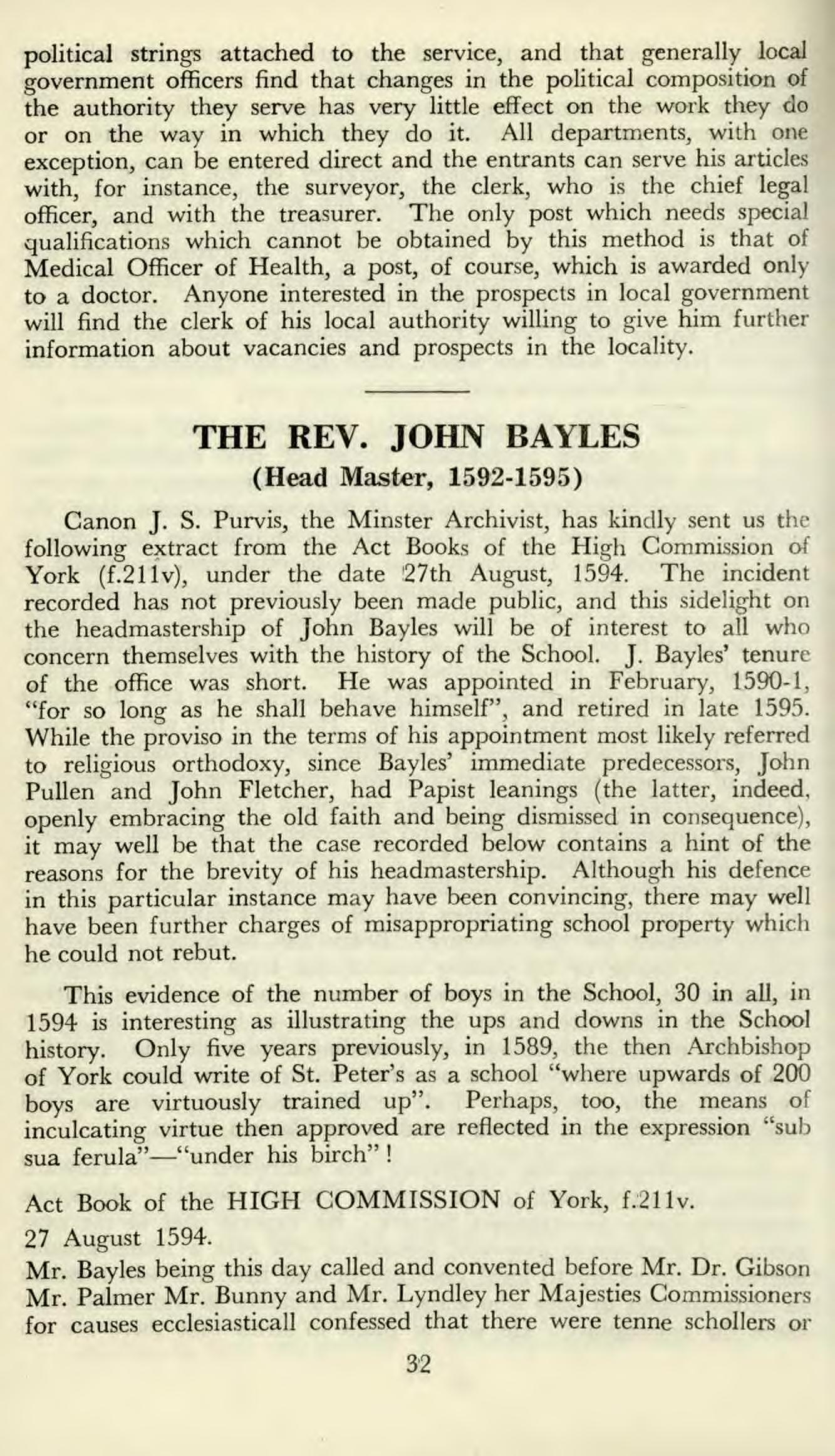
2 minute read
The Rev. John Bayles
from Feb 1958
by StPetersYork
political strings attached to the service, and that generally local government officers find that changes in the political composition of the authority they serve has very little effect on the work they do or on the way in which they do it. All departments, with one exception, can be entered direct and the entrants can serve his articles with, for instance, the surveyor, the clerk, who is the chief legal officer, and with the treasurer. The only post which needs special qualifications which cannot be obtained by this method is that of Medical Officer of Health, a post, of course, which is awarded only to a doctor. Anyone interested in the prospects in local government will find the clerk of his local authority willing to give him further information about vacancies and prospects in the locality.
(Head Master, 1592-1595)
Canon J. S. Purvis, the Minster Archivist, has kindly sent us the following extract from the Act Books of the High Commission of York (f.211v), under the date 27th August, 1594. The incident recorded has not previously been made public, and this sidelight on the headmastership of John Bayles will be of interest to all who concern themselves with the history of the School. J. Bayles' tenure of the office was short. He was appointed in February, 1590-1, "for so long as he shall behave himself", and retired in late 1595. While the proviso in the terms of his appointment most likely referred to religious orthodoxy, since Bayles' immediate predecessors, John Pullen and John Fletcher, had Papist leanings (the latter, indeed, openly embracing the old faith and being dismissed in consequence), it may well be that the case recorded below contains a hint of the reasons for the brevity of his headmastership. Although his defence in this particular instance may have been convincing, there may well have been further charges of misappropriating school property which he could not rebut.
This evidence of the number of boys in the School, 30 in all, in 1594 is interesting as illustrating the ups and downs in the School history. Only five years previously, in 1589, the then Archbishop of York could write of St. Peter's as a school "where upwards of 200 boys are virtuously trained up". Perhaps, too, the means of inculcating virtue then approved are reflected in the expression "sub sua ferula"—"under his birch" !
Act Book of the HIGH COMMISSION of York, f.211v. 27 August 1594. Mr. Bayles being this day called and convented before Mr. Dr. Gibson Mr. Palmer Mr. Bunny and Mr. Lyndley her Majesties Commissioners for causes ecclesiasticall confessed that there were tenne schollers or










